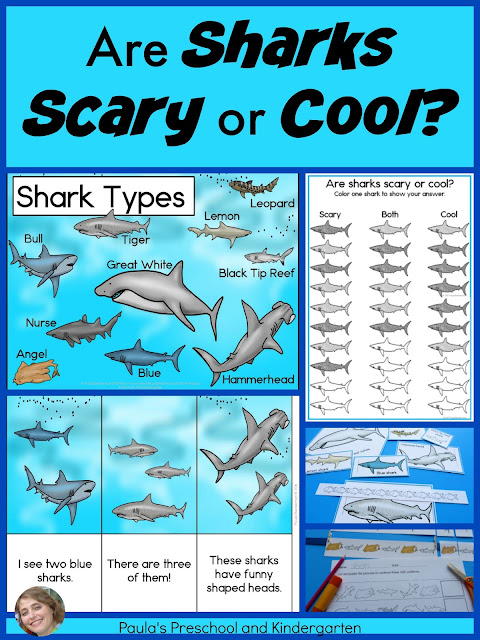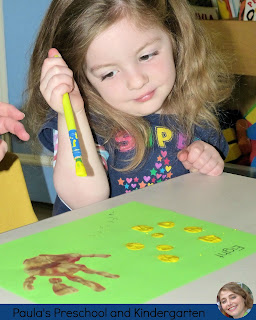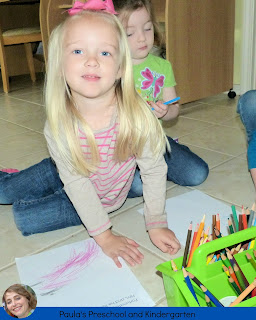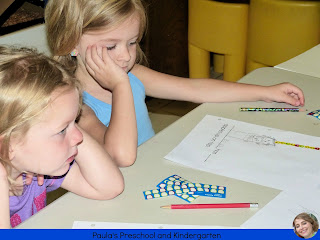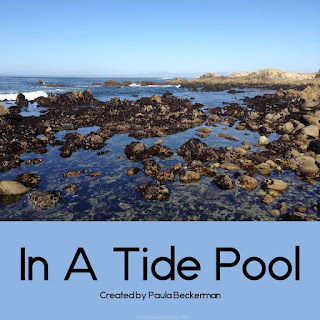a Rafflecopter giveaway
I love teaching and learning with young children, this is where I share my ideas.
Welcome to Paula's Primary Classroom! This blog is where I share ideas for teaching and learning with families, friends and other early childhood educators. Please don't use the photos or text of this blog without permission, but please do use any ideas you find useful. Thank you for stopping by!
Monday, July 31, 2017
Announcing a chance to win something awesome!
a Rafflecopter giveaway
Sunday, July 23, 2017
Are Sharks Scary or Cool? Download this free graph!
It's shark week - does that excite you, or freak you out a little? Maybe some of both? I was thinking about how our students might feel about sharks this week, so I put together a graph to find out. (Click on the picture for my first freebie, then read on for another!) It's pretty simple, something you could use quickly at the beginning of a shark or ocean unit. Of course, you could follow up by teaching your students about them, and then revisit the graph. How many students do you suppose might feel differently after learning about sharks?
Sharks
really are scary - to me at least. They're also incredibly cool and
amazing - okay, I guess I have to repeat, to me at least.
Of course, we need to practice actually measuring things ourselves (not real sharks, thank you!). This activity uses fish lengths as a non-standard unit of measure.
For slightly older students, I wrote a non-fiction reproducible reader about sharks. To make differentiating easy, there are two versions of the text.
For my younger kiddos, I made this patterning center. I clipped the pattern strips onto ribbon, and the kiddos clip on additional pictures to either match...
...or extend the patterns.
We follow up with cut and paste versions.
Finally, I want to share another freebie with you! This is a very simple reading center, which I like to put in a pocket chart or on a table. I hope you'll download it, and I'd so appreciate you leaving feedback after you do!
Sunday, July 16, 2017
How to Increase Reading Engagement Every Day This Year
I think reading engagement is every teacher's hope; we all want our students to love reading as much as we do. We want to see our kiddos engaged in reading, choosing to pick up books, talking about what they're reading, eagerly sharing their favorites with each other. I have vivid memories of seeing my own young children lose themselves in books, laying on a bed or a couch, oblivious to the world around them, immersed in a world that only exists in words... and I cherish those memories. We know that children who love to read, and choose to read, are going to read, and in turn they'll become even better readers. Students like this are easy to teach, because they're eager to learn, and know that they CAN learn. If only there was a way to develop this love of reading in all our children!
It makes a lot of sense when you think about it: our kiddos are interested in themselves, and in each other. They want to share their ideas, they want to smile, laugh, or reminisce together, they want to see their own words and pictures being read by their friends, and they want to see their friends' words and pictures. Class books meet all those criteria, and as an added bonus, they engage students in writing and drawing, as well as reading. It's no wonder I love class books!
I also made class books about experiences we shared, such as a trip to the fire station or a pizza parlor. I took photos of each student during our experiences, and upon returning to our classroom gave each student a page with room for a photo and room to write about our experience. I'd develop the pictures, and then let my kiddos stick a real photo of themselves onto their page. Sometimes we'd bind all the pages together and make a class experience book, other times each child would add their page to their own "photo album". Can you imagine how much they loved to revisit these books?
Of course, photos aren't the only way to illustrate a class book. Oftentimes I'd have my students illustrate their page.
Sometimes we wrote about an experience as a class, with each student contributing something about the experience, while I wrote on chart paper. Next we would decide on what order the events of our narrative belonged in, and arrange their individual sentences into a retelling of what we had done. I liked to type up the story, print it out on multiple pages, and have students work in teams to illustrate the pages.
You've probably noticed that all of these methods took some effort on my part: taking and developing photos, or taking dictation and then typing up students' words. Yes, there is definitely a lot of teacher effort in these particular methods, and no, you probably can't manage this every day. Sometimes you need something quick and easy, right?
This kind of book usually has a simple, repetitive text, with room for students to add just one or two words. It's easier for young kiddos to write, and the repeated text makes it easier for them to read too. Since the work in these books is their own, and their names, and names of friends are on every page, my kiddos have always LOVED this kind of book. They read them to themselves. They read them with their friends. They read them to their parents at pick up time. Sometimes I even let them check these books out to take home overnight. Win-win-win!
If you think you'd like to incorporate class books into your reading and writing time, you can find inspiration many places! Try pinterest - here's my board about class books to get you started:
I've put together many of my class book ideas into a print and go format. If you like the idea of class books and want a no-muss no-fuss ready to go resource that also covers every single preprimer word, I hope you'll check out:
Thank you so much for reading this long post - I hope you're inspired to incorporate more class books in your classroom, and I'd love to hear about how they work out for you!
Saturday, July 8, 2017
Exposed on the beach: life in a tide pool
I love the beach, don't you? I love the peace I find at the beach, the sound and smell of the ocean, the wind on my skin, the ever changing vista of waves and sand. It's a perfect destination, and one I don't make it to nearly enough. Living several hours inland means we can take a beach trip, but it's not a day trip, and takes some planning. Still, so worthwhile!

What would you most like to see, if you went tide pooling? Jellyfish? Sea stars? Fish? There are so many things that might be in a tide pool: anemones, corals, sea weed, crabs... I've been thinking about tide pools for a while, and have researched a lot of the creatures that live there in order to create resources about them. I think what I most hoped for were sea stars - they can be so many colors, and can have between 5 and 40 arms! Did you know sea stars can regenerate an arm if it is lost? So amazing!
We didn't see any sea stars, but look at all the fascinating critters we did see! There were sea anemones:
There were a lot of crabs, both in and out of the water, and this one was crawling over a layer of limpets and what I think may be tiny barnacles!
I had never seen hermit crabs in the wild before, and was fascinated with the number and variety of shells that kept moving around in the tide pools. Photographing them in the water was a big challenge, until I spotted some in a very sandy spot.
There were so many kinds of sea grass and sea weed, I wish that I had thought to do some research on what varieties to expect before we headed to the beach. Next time I'll know!
We also saw small fish that darted between rocks - they were very skittish, and we saw clams and mussels, and other shell fish. We walked the beaches, collected shells and drift wood, and relaxed in the sea air.
There's a lot to see along the shore line, and we were lucky enough to see otters, seals, gulls and more. This is my favorite photo from the day, because it shows the variety of habitats along the shoreline - and captures the serenity we felt while exploring.
Are you thinking about a tide pooling trip? Here are some things to remember to take with you:
- something to collect empty sea shells in. Remember not to disturb living creatures, for those you'll want to take your
- camera. If you have one that will shoot underwater, take it!
- shoes that can get wet, but will also provide traction and support for walking on rocks.
- towels. Even if all you have to do is brush off sand, you'll appreciate these!
- water and snacks. You're not going to want to leave!
- sun screen. Even on a cloudy day.
- a hat and a light jacket or wind breaker, sea air can be chilly.
I'd also recommend researching what you're likely to see, so you can identify and appreciate everything you find. If you're going with children in grades 1-4, you might find this non-fiction reader informative:
For younger children, try this one (it has 3 versions, for preschool through second grade levels):
I hope you are able to take a trip to the beach sometime - it really is the best!
Subscribe to:
Posts (Atom)

